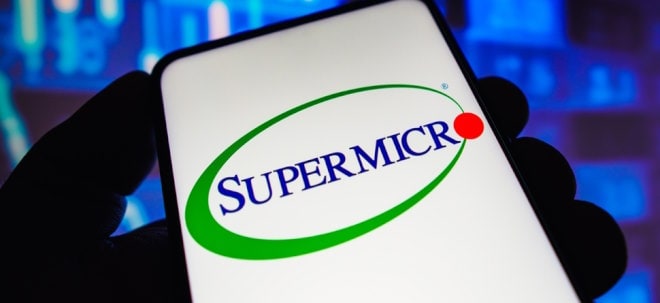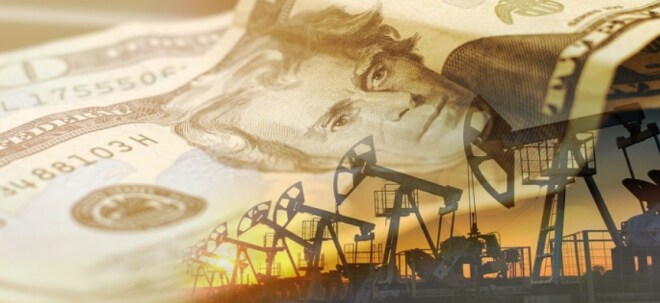UBER Vs. GRAB: Which Ride-Hailing Stock Has Better Upside Potential?
Werte in diesem Artikel
Uber Technologies UBER and Grab GRAB both provide ride-hailing services. Each company has reshaped the transportation industry with innovative business models built around ride-sharing.However, they differ in geography and strategy. Uber operates globally, while Grab is a leading provider of deliveries, mobility and digital financial services across multiple cities in eight Southeast Asian countries — Cambodia, Indonesia, Malaysia, Myanmar, the Philippines, Singapore, Thailand and Vietnam. Although ride-sharing is Uber’s core business, it has broadened its scope over time to include food delivery and freight.Given these differences in approach and regional focus, we’ll examine them closely to see which one currently holds the edge and, more importantly, which might be the smarter investment now.The Case for UBER StockUber, headquartered in San Francisco, CA, is seeing rising demand across its ridesharing and delivery platforms. This growing popularity, combined with new growth initiatives and a strong focus on cost discipline, is helping drive solid business performance.In its second-quarter 2025 results, released last month, Uber continued its streak of beating earnings expectations, showing resilience despite tough conditions.Uber Technologies Price, Consensus and EPS Surprise Uber Technologies, price-consensus-eps-surprise-chart | Uber Technologies QuoteIn the September quarter, Uber expects gross bookings in the range of $48.25 billion to $49.75 billion, indicating year-over-year growth of 17-21% on a constant currency basis. The outlook assumes a neutral to modestly positive foreign exchange impact. The adjusted EBITDA is estimated to be in the range of $2.19 billion to $2.29 billion, suggesting year-over-year growth of 30% to 36%.Recently, Uber inked a deal with retailer Best Buy BBY for on-demand delivery. The deal brings consumer electronics from more than 800 stores to the Uber Eats platform. Uber Eats is the online food ordering and delivery platform of Uber. Following the tie-up, which took effect on Sept. 2, Best Buy customers throughout the United States are eligible to order a wide range of electronics, appliances and tech essentials on Uber Eats for delivery to their doorsteps.The partnership allows Uber Eats and Best Buy to make the latest technology more accessible than ever, thereby reflecting the deal’s customer-friendly nature. The association with Best Buy to facilitate electronics delivery strengthens Uber’s delivery segment and is aimed at diversifying its delivery ecosystem.Uber aims to gain a stronghold in the highly promising robotaxi market through strategic partnerships. By adopting this approach, Uber has been able to avoid the massive R&D costs associated with developing autonomous systems independently.Another area of confidence is Uber’s buyback strategy. Recently, the company announced a stock repurchase authorization of up to an additional $20 billion of common stock. With this bold initiative, UBER is not only enhancing shareholder value but also signalling confidence in its ongoing business strategy. The latest shareholder-friendly announcement by Uber is in addition to the $7 billion authorization announced in 2024. The accelerated $1.5 billion stock buyback program, a part of the $7 billion program, was completed in the first quarter of 2025. In 2024, Uber generated a record $6.9 billion in free cash flow, highlighting its financial bliss, with an adjusted EBITDA of $6.5 billion.In 2018, Uber, which went public in 2019, sold its business in Southeast Asia to Grab. Uber has a significant stake in Grab.The Case for GRAB StockGrab’s success in Southeast Asia is largely driven by its ability to adapt to local market conditions. The company’s transformation from a simple taxi-hailing app into an “everyday everything app” — offering services, such as food delivery, e-scooter rentals, and digital payments — underscores its ambition to expand and diversify.Grab is also benefiting from robust growth in On-Demand Gross Merchandise Value (GMV), an expanding fintech portfolio, and rising user engagement across its platform. On-Demand GMV, which covers the mobility and deliveries segments, rose 21% year over year in the second quarter of 2025. For full-year 2025, the company projects revenues between $3.33 billion and $3.40 billion, suggesting 19-22% year-over-year growth.Grab Holdings Price, Consensus and EPS Surprise Grab Holdings price-consensus-eps-surprise-chart | Grab Holdings QuoteGrab is strengthening its position across Southeast Asia by partnering with Amazon’s AMZN cloud computing platform — Amazon Web Services (“AWS”) — to drive growth in mobility, deliveries and financial services.Grab selected AWS as its preferred cloud provider to accelerate growth across its mobility, deliveries, and financial services verticals, including its digital banks. Grab has enhanced operational efficiency, reduced infrastructure costs and launched innovative services by utilizing AWS’ scalable, secure and cost-efficient cloud solutions.GRAB recently decided to make a strategic equity investment in China’s WeRide WRD to accelerate the deployment and commercialization of Level 4 robotaxis and shuttles across Southeast Asia. The association aims to integrate WeRide’s autonomous vehicles into Grab’s platform to enhance service quality and safety.The investment, expected to close in the first half of 2026, aligns with WeRide’s strategy to scale its commercial AV fleet in the region and advance AI-driven mobility solutions.Grab Appears to be More Pricey Than UberUber is trading at a forward sales multiple of 3.45. Uber has a Value Score of D. Meanwhile, Grab has a Value Score of F, with its forward sales multiple at 5.6.Image Source: Zacks Investment ResearchConclusionUber’s valuation, compared to GRAB, is no doubt tempting. Moreover, the company’s diversification efforts and shareholder-friendly approach attest to its financial bliss. Uber’s large size (market capitalization of $199.05 billion) positions it well to overcome uncertain times, such as the current one.Grab, on the other hand, has a much narrower geographical focus, making it highly susceptible to economic downturns, such as the current scenario. The economic uncertainty in key Southeast Asia markets, driven by factors like inflation, changing consumer behavior, and supply-chain disruptions, is hurting Grab. Moreover, Grab faces intense competition in its deliveries segment. The much smaller Grab, with a market capitalization of $21.3 billion, is not as shareholder-friendly as its larger rival.On the basis of our analysis, Uber seems a better pick than Grab, despite both carrying a Zacks Rank #3 (Hold) currently.You can see the complete list of today’s Zacks #1 Rank (Strong Buy) stocks here 7 Best Stocks for the Next 30 DaysJust released: Experts distill 7 elite stocks from the current list of 220 Zacks Rank #1 Strong Buys. They deem these tickers "Most Likely for Early Price Pops."Since 1988, the full list has beaten the market more than 2X over with an average gain of +23.5% per year. So be sure to give these hand picked 7 your immediate attention. See them now >>Want the latest recommendations from Zacks Investment Research? Today, you can download 7 Best Stocks for the Next 30 Days. Click to get this free report Amazon.com, Inc. (AMZN): Free Stock Analysis Report Best Buy Co., Inc. (BBY): Free Stock Analysis Report WeRide Inc. (WRD): Free Stock Analysis Report Uber Technologies, Inc. (UBER): Free Stock Analysis Report Grab Holdings Limited (GRAB): Free Stock Analysis ReportThis article originally published on Zacks Investment Research (zacks.com).Zacks Investment ResearchWeiter zum vollständigen Artikel bei Zacks
Übrigens: Uber und andere US-Aktien sind bei finanzen.net ZERO sogar bis 23 Uhr handelbar (ohne Ordergebühren, zzgl. Spreads). Jetzt kostenlos Depot eröffnen und Neukunden-Bonus sichern!
Ausgewählte Hebelprodukte auf Grab
Mit Knock-outs können spekulative Anleger überproportional an Kursbewegungen partizipieren. Wählen Sie einfach den gewünschten Hebel und wir zeigen Ihnen passende Open-End Produkte auf Grab
Der Hebel muss zwischen 2 und 20 liegen
| Name | Hebel | KO | Emittent |
|---|
| Name | Hebel | KO | Emittent |
|---|
Quelle: Zacks
Nachrichten zu Uber
Analysen zu Uber
| Datum | Rating | Analyst | |
|---|---|---|---|
| 08.02.2023 | Uber Outperform | RBC Capital Markets | |
| 17.11.2021 | Uber Buy | Goldman Sachs Group Inc. | |
| 13.09.2021 | Uber Buy | Goldman Sachs Group Inc. | |
| 16.12.2020 | Uber overweight | JP Morgan Chase & Co. | |
| 07.07.2020 | Uber Outperform | RBC Capital Markets |
| Datum | Rating | Analyst | |
|---|---|---|---|
| 08.02.2023 | Uber Outperform | RBC Capital Markets | |
| 17.11.2021 | Uber Buy | Goldman Sachs Group Inc. | |
| 13.09.2021 | Uber Buy | Goldman Sachs Group Inc. | |
| 16.12.2020 | Uber overweight | JP Morgan Chase & Co. | |
| 07.07.2020 | Uber Outperform | RBC Capital Markets |
| Datum | Rating | Analyst | |
|---|---|---|---|
| 22.07.2019 | Uber Hold | HSBC |
| Datum | Rating | Analyst | |
|---|---|---|---|
Keine Analysen im Zeitraum eines Jahres in dieser Kategorie verfügbar. Eventuell finden Sie Nachrichten die älter als ein Jahr sind im Archiv | |||
Um die Übersicht zu verbessern, haben Sie die Möglichkeit, die Analysen für Uber nach folgenden Kriterien zu filtern.
Alle: Alle Empfehlungen


